The comforting sound of a wood fire has always been beloved to me, which led me to choose to install a wood stove insert in my home. While the project seemed overwhelming at first, with the proper tools and thorough planning, I successfully completed the installation on my own.
In this guide, I’ll take you through the step-by-step process of assessing your space, choosing the perfect insert, and safely installing it.
Get ready to enjoy the warmth and ambiance of a wood stove insert in your own home!
Key Takeaways
- Properly assess and prepare the space, including measuring the area and evaluating ventilation and chimney conditions.
- Prioritize safety throughout the installation process, wearing protective gear and following ladder safety procedures.
- Choose the right wood stove insert based on heating needs, home characteristics, and heating efficiency.
- Ensure proper sizing and installation by measuring the space, checking clearances and ventilation, and consulting with a professional if unsure.
Assessing Your Space and Preparing for Installation
I’m evaluating my space to determine the best location for installing a wood stove insert. Before diving into the installation process, it’s crucial to carefully assess the available space and make necessary preparations. Follow this pre-installation checklist to ensure a smooth and safe installation.
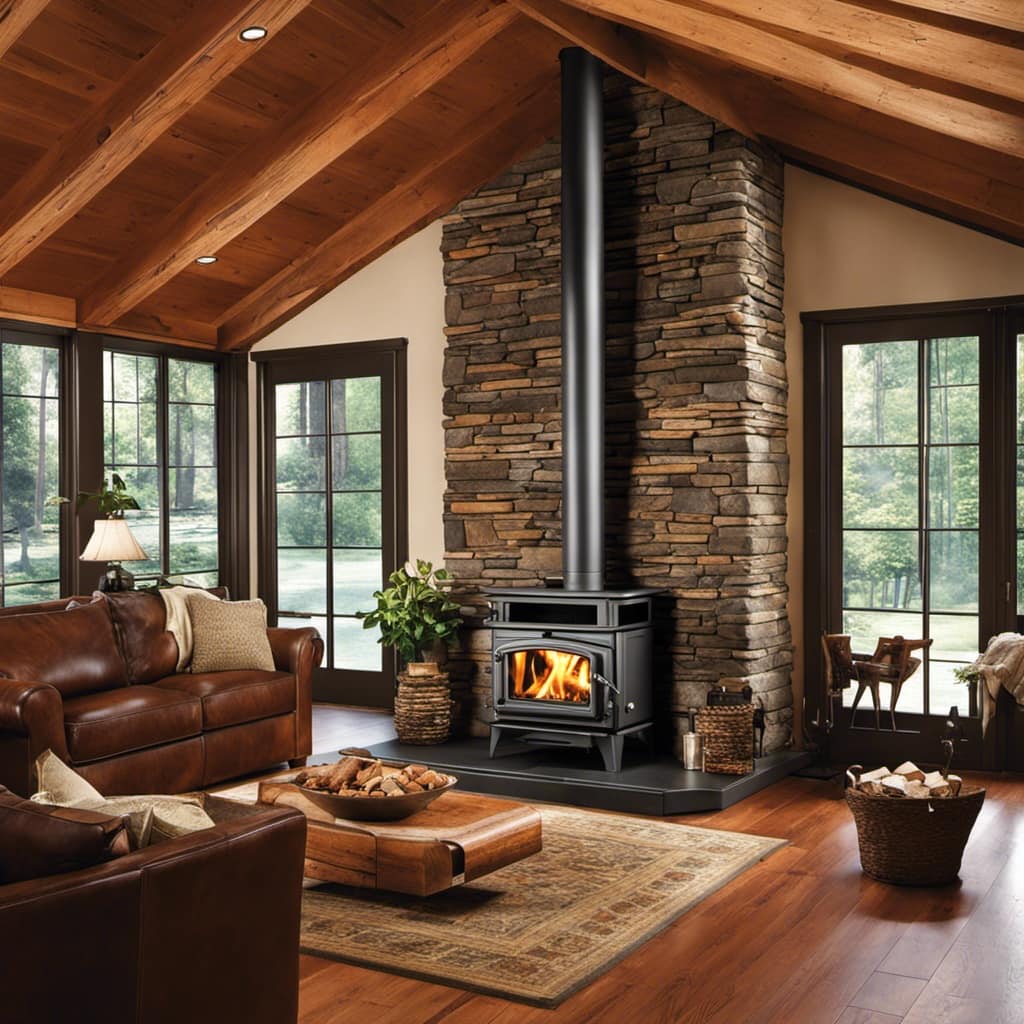
Measure the area: Begin by measuring the space where you plan to install the wood stove insert. Consider the dimensions of the insert and clearance requirements specified by the manufacturer.
Check for proper ventilation: Verify that your space meets the necessary ventilation requirements. Ensure that there’s adequate clearance from combustible materials such as walls and furniture.
Evaluate the chimney: Assess the condition of your existing chimney. Verify if it’s compatible with a wood stove insert. If needed, hire a professional to clean and inspect the chimney for any potential issues.
Clear the area: Remove any objects or obstructions near the installation site. This includes furniture, curtains, and any flammable items that may pose a safety hazard.
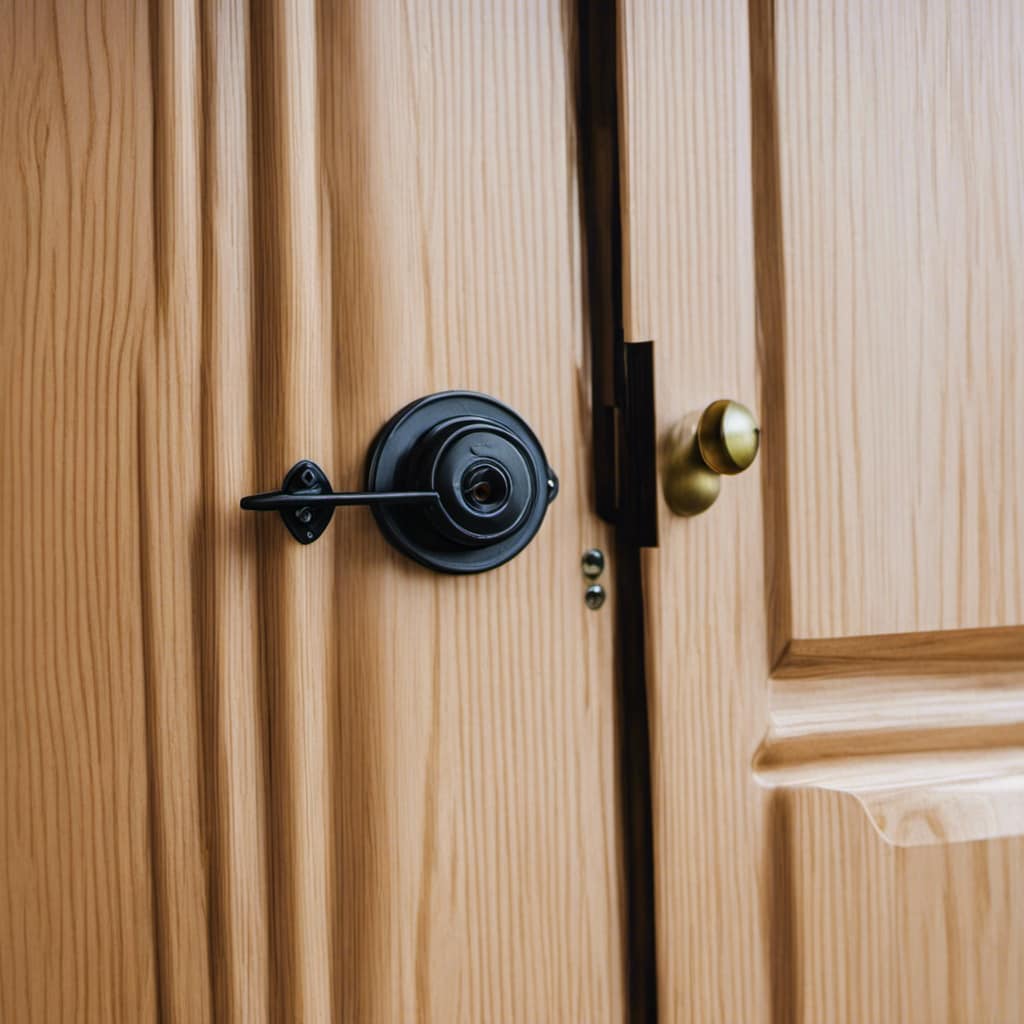
Install a non-combustible hearth: Place a non-combustible hearth pad beneath the wood stove insert to protect the surrounding flooring.
Choosing the Right Wood Stove Insert for Your Home
When choosing the right wood stove insert for your home, it’s important to consider a few key factors.
First, assess the heating needs of your space and determine the most efficient option for your heating requirements.
Next, ensure that the wood stove insert is properly sized and installed according to the manufacturer’s specifications to maximize its performance and safety.
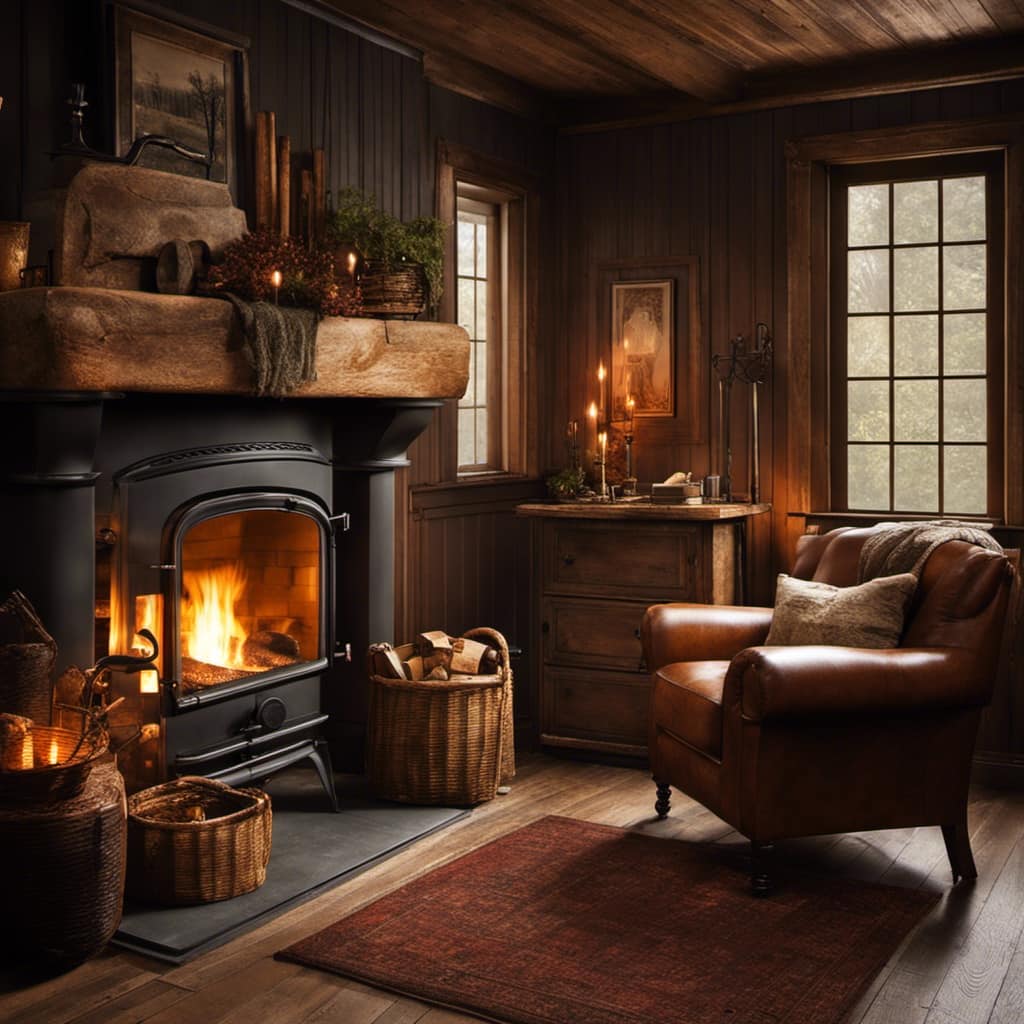
Lastly, consider the specific characteristics of your home, such as the layout and insulation, to ensure that the wood stove insert is compatible with your space and will provide optimal heating efficiency.
Efficient Heating Options
I’ve found that using an efficient heating option like a wood stove insert can greatly reduce energy costs. Not only does it provide warmth and comfort, but it also maximizes heating efficiency and is a cost-effective solution for heating your home. Here is a step-by-step guide on how to install a wood stove insert:
- Measure the fireplace opening to ensure the wood stove insert fits properly.
- Clear the area around the fireplace and lay down a non-combustible floor pad for safety.
- Install a chimney liner to improve the efficiency and safety of the wood stove insert.
- Position the wood stove insert in the fireplace opening and secure it according to the manufacturer’s instructions.
- Connect the stovepipe to the wood stove insert and the chimney liner.
- Install a chimney cap to prevent debris and animals from entering the chimney.
- Test the wood stove insert to ensure it is working properly and efficiently.
By following these steps, you can enjoy the benefits of a wood stove insert while saving on energy costs.
| Pros | Cons |
|---|---|
| High heating efficiency | Requires regular maintenance |
| Cost-effective heating | Initial installation cost |
| Provides a cozy ambiance | Requires a good supply of firewood |
Proper Sizing and Installation
Proper sizing and installation are essential for maximizing the efficiency and effectiveness of a wood stove. When it comes to installing a wood stove, there are a few crucial steps to follow to ensure a safe and efficient operation.
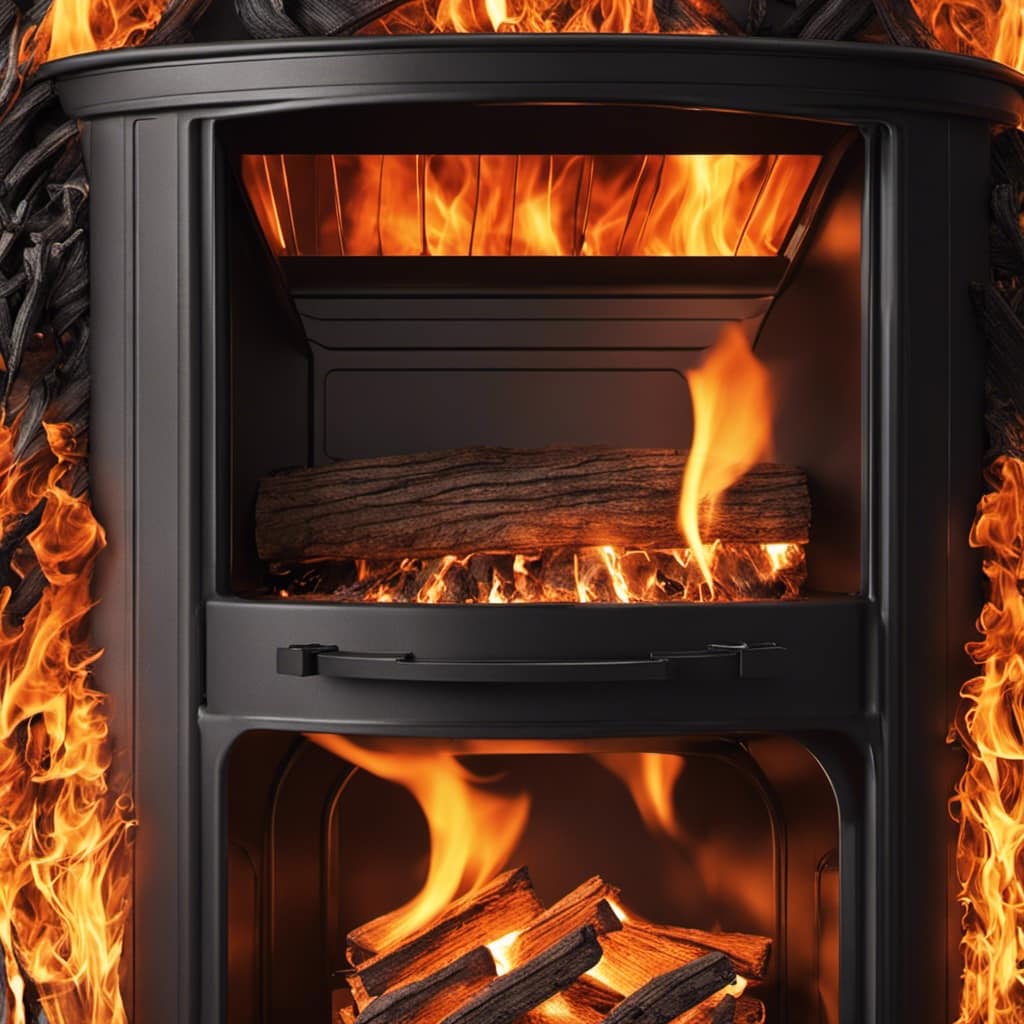
Here are three important considerations:
Measure the space: Determine the square footage of the area you want to heat. This will help you choose the right size stove for your needs.
Clearances and ventilation: Check local codes and manufacturer guidelines for the required clearances from combustible materials. Ensure proper ventilation requirements are met to prevent the buildup of harmful gases.
Chimney installation: If you don’t already have a chimney, you’ll need to install one. Make sure it’s correctly sized and installed to provide a safe and efficient draft for your wood stove.
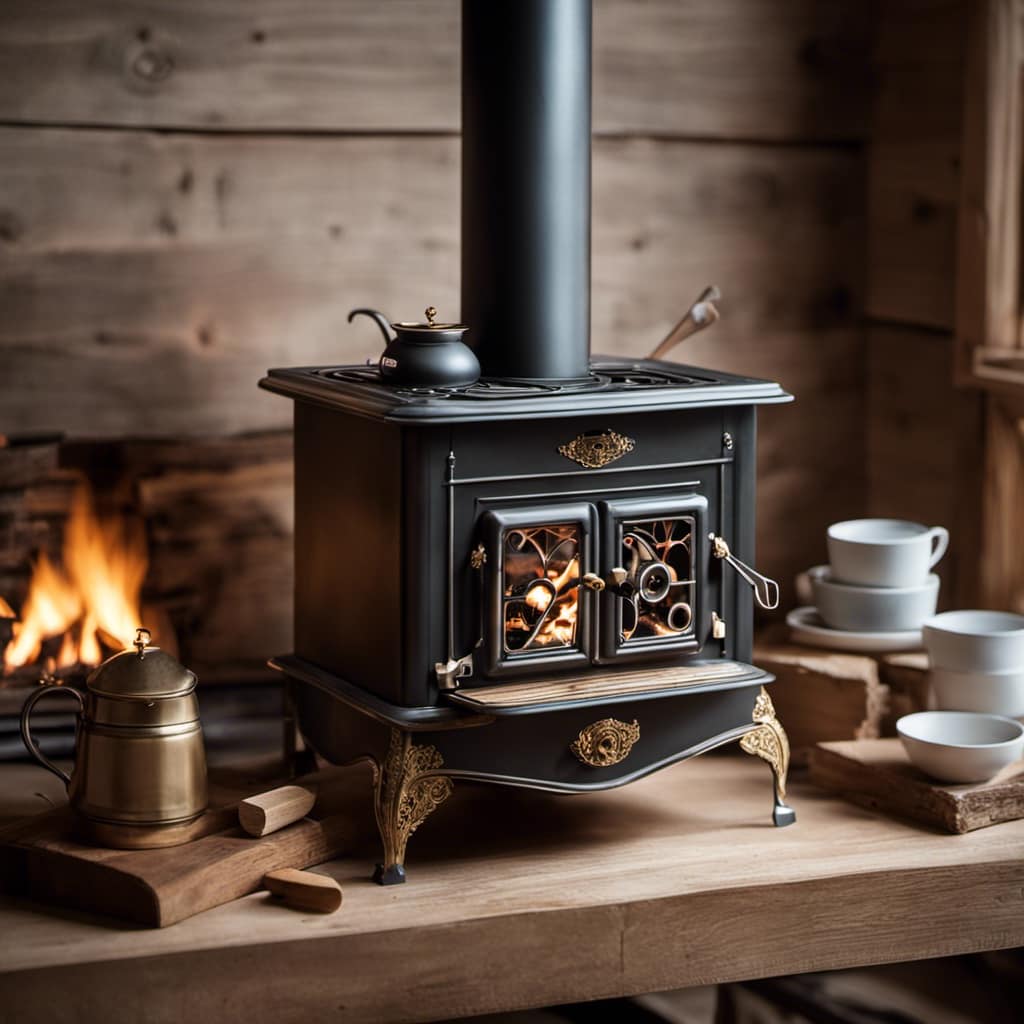
Remember to always follow safety precautions and consult with a professional if you’re unsure about any aspect of the installation process.
Considerations for Your Home
In my opinion, the size and layout of my home are important factors to consider when choosing a wood stove. Not only do I want a stove that will effectively heat my space, but I also want it to be energy efficient. To determine the right size stove for my home, I considered the square footage of the space I wanted to heat, as well as the layout of the rooms. I also took into account any insulation or draft issues that may affect the stove’s performance. Additionally, I wanted a stove that would be compatible with other heating alternatives in my home, such as a central heating system. By considering these factors, I was able to find a wood stove that was both suitable for my home’s layout and energy efficient.
| Considerations | Size of Home | Layout of Rooms | Energy Efficiency |
|---|---|---|---|
| Importance | Important | Important | Important |
| Factors | Square footage | Open or closed floor plan | Insulation and draft issues |
| Compatibility with other | |||
| heating alternatives |
Gathering the Necessary Tools and Materials
Before starting the installation process, it’s crucial to gather all the necessary tools and materials to ensure a smooth and efficient workflow.
Begin by assembling the essential tools such as a drill, screwdriver, level, and tape measure.
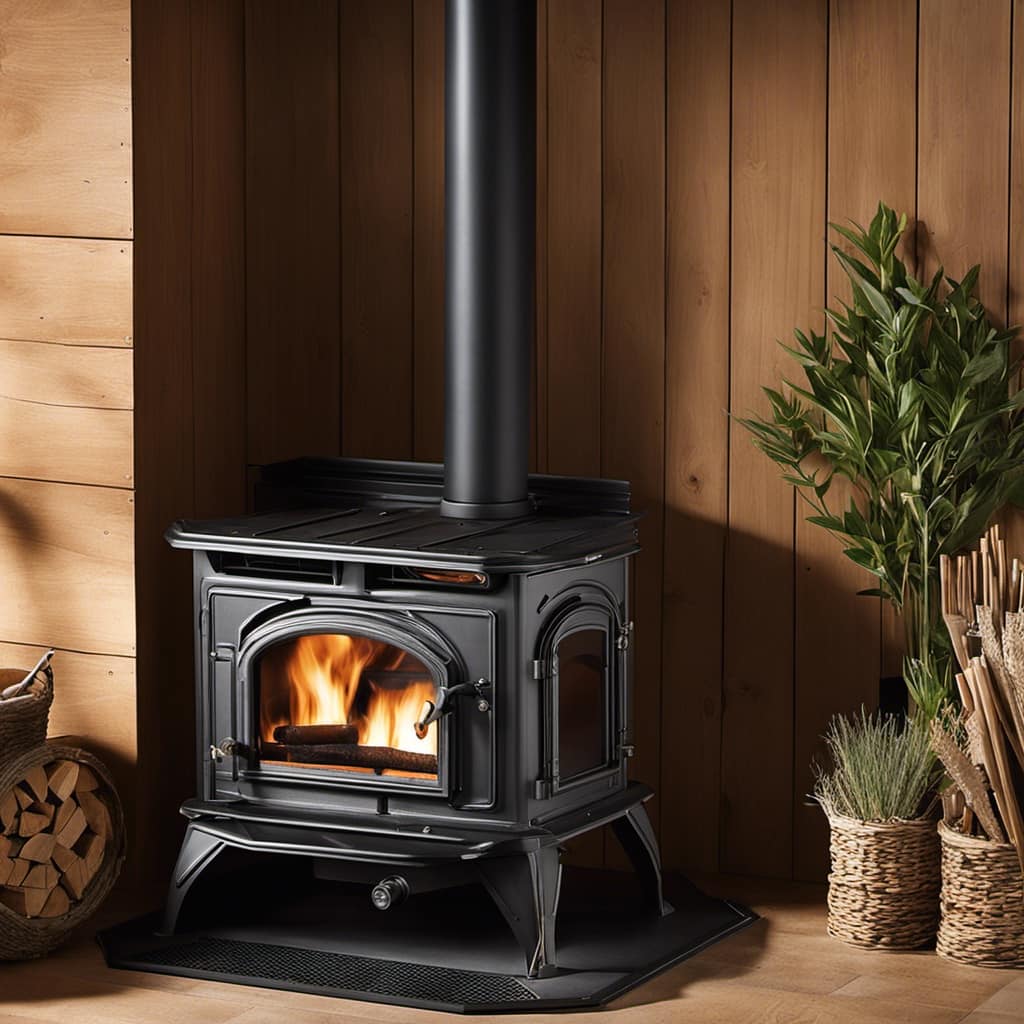
Additionally, gather the required materials including screws, brackets, insulation, and sealant for a secure and airtight installation.
Remember to prioritize safety by wearing protective gear such as gloves and goggles throughout the process.
Essential Tools for Installation
I’ll need a few essential tools for the installation of the wood stove insert. Here are the tools you’ll need to ensure a successful installation:
Chimney brush: This tool is crucial for cleaning the chimney before installing the wood stove insert. It helps remove creosote buildup and ensures proper airflow.
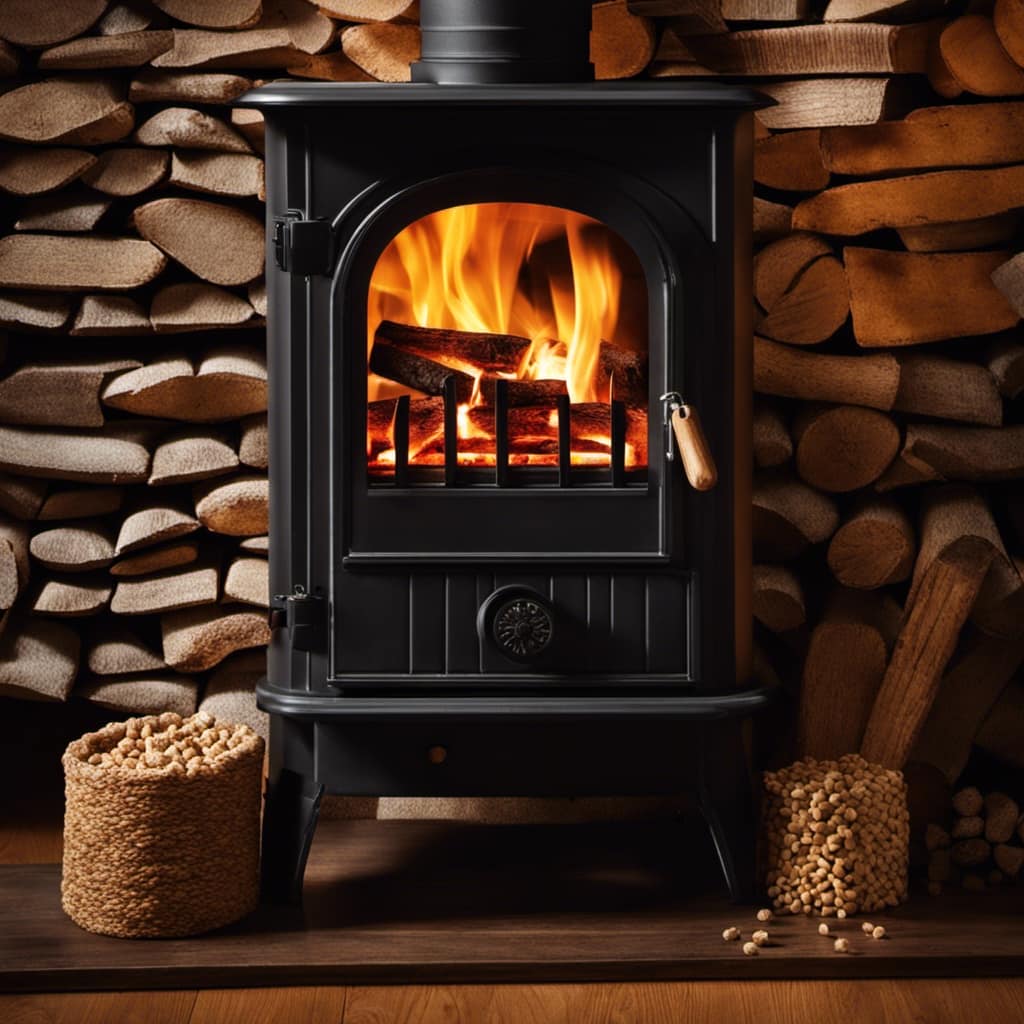
Fireproof gloves: Safety should always be a priority when working with a wood stove insert. Fireproof gloves protect your hands from burns and allow you to handle hot materials safely.
Level: It’s important to ensure that the wood stove insert is level during installation. A level tool helps you achieve this, ensuring proper functionality and preventing any potential issues down the line.
Before beginning the installation process, make sure you’ve these essential tools on hand. They’ll make the installation process easier and safer, allowing you to enjoy your wood stove insert for years to come.
Required Materials for Assembly
To assemble the unit, I’ll need the following materials: fireproof insulation, high-temperature adhesive, and a chimney liner. Here is a detailed materials list for the assembly of a wood stove insert:
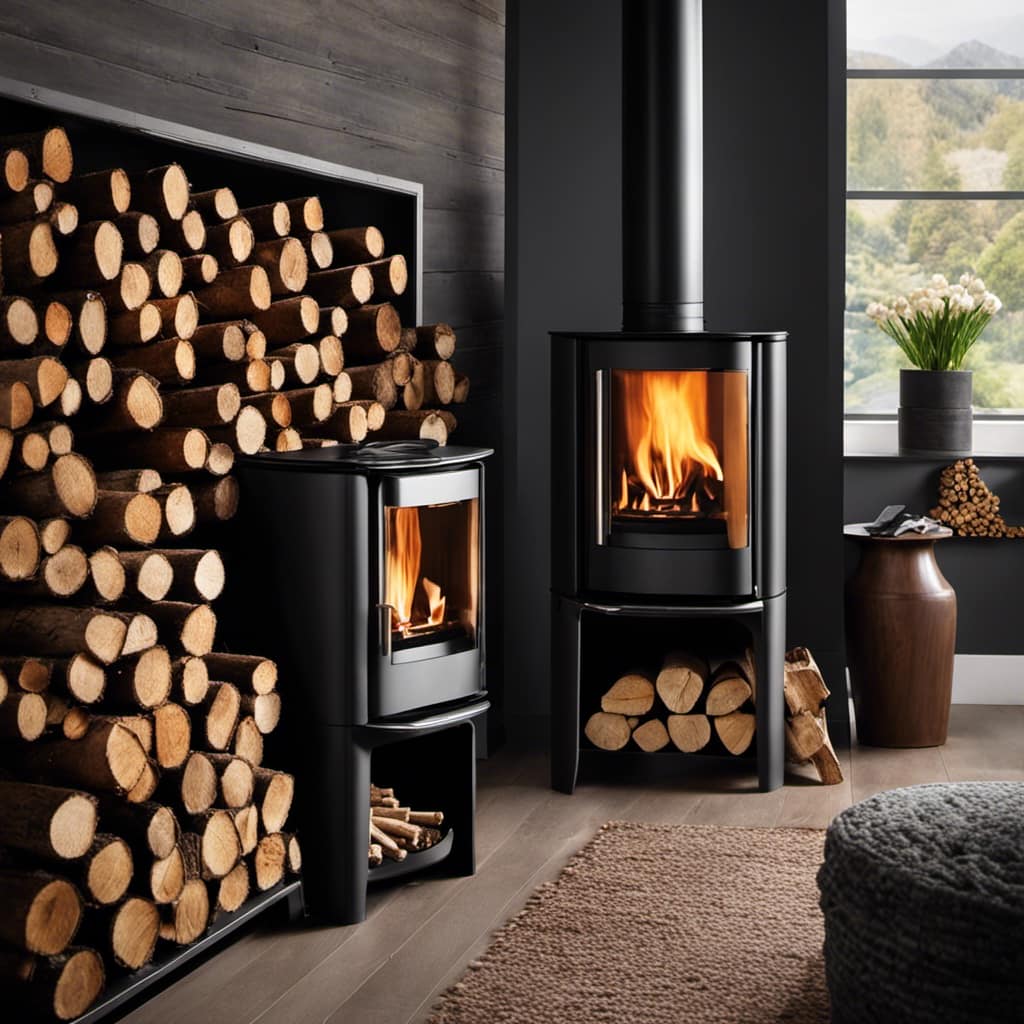
| Materials | Quantity |
|---|---|
| Fireproof Insulation | 1 roll |
| High-Temperature Adhesive | 1 tube |
| Chimney Liner | 1 piece |
| Vent Pipe | 1 length |
| Trim Kit | 1 set |
Now that I have gathered all the necessary materials, I can proceed with the assembly steps. First, I will apply the fireproof insulation to the interior of the firebox, ensuring a tight seal. Next, I will attach the chimney liner to the stove, using the high-temperature adhesive to secure it in place. Once the liner is in position, I will connect the vent pipe to the liner, making sure to align it properly. Finally, I will install the trim kit to give the wood stove insert a finished look.
With the assembly complete, I can now move on to preparing the fireplace and chimney for installation.
Preparing the fireplace and chimney for installation requires thorough cleaning and inspection to ensure the safety and efficiency of the wood stove insert.
Preparing the Fireplace and Chimney for Installation
I’m checking the fireplace and chimney for any potential issues before installing the wood stove insert. It’s essential to prepare the fireplace and chimney properly to ensure the safe and efficient operation of the wood stove insert.
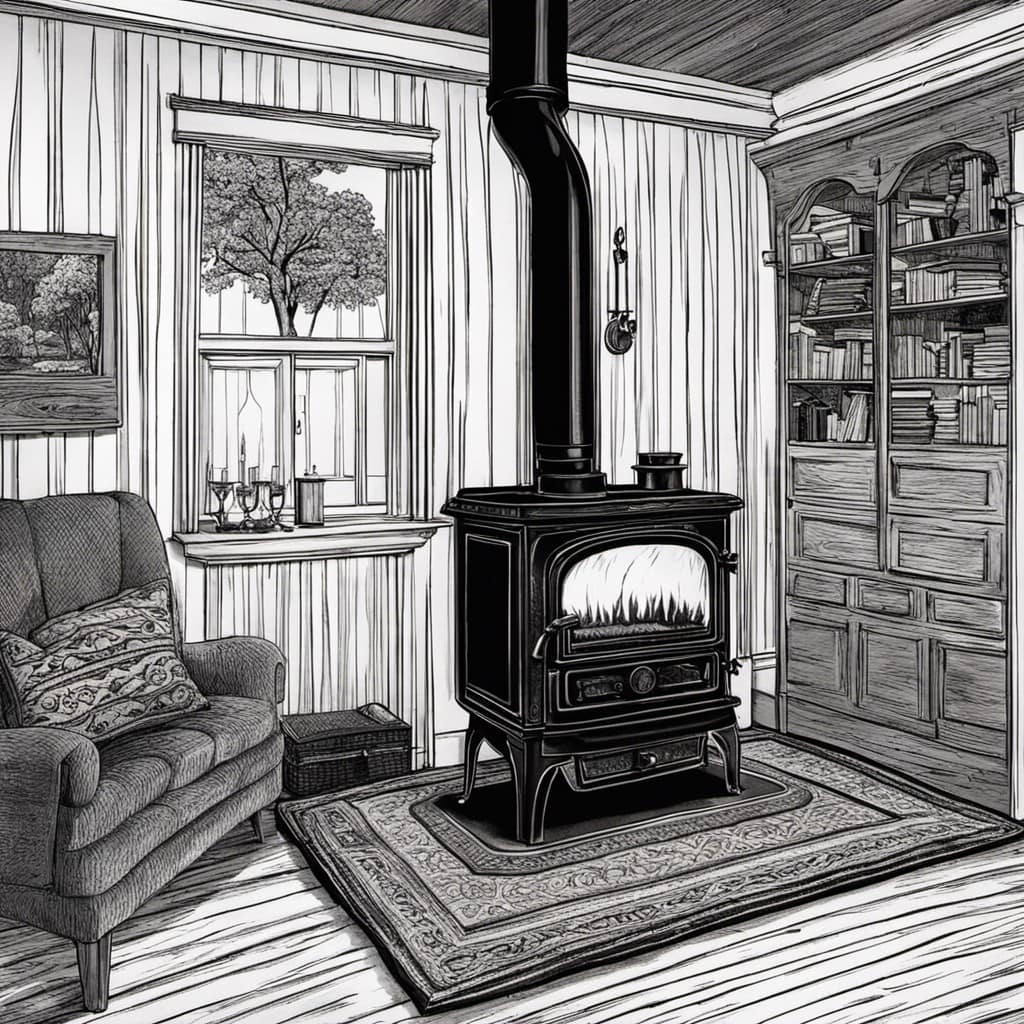
Here are the preparation steps and safety precautions to follow:
Inspect the Fireplace: Start by examining the interior and exterior of the fireplace for any signs of damage, such as cracks or loose bricks. Ensure that the fireplace is structurally sound before proceeding with the installation.
Clean the Chimney: Clean the chimney thoroughly to remove any creosote buildup or debris that could potentially ignite and cause a chimney fire. Hire a professional chimney sweep if necessary, as they have the expertise and tools to perform a thorough cleaning.
Check the Chimney Liner: Inspect the chimney liner for any damage or deterioration. The liner is crucial for proper ventilation and preventing the buildup of dangerous gases. Replace or repair the liner if needed.

Safety Precautions:
- Wear protective gear, including gloves and safety goggles, when inspecting and cleaning the fireplace and chimney.
- Use a sturdy ladder and have someone assist you when accessing the roof to inspect and clean the chimney.
- If you notice any significant issues or are unsure about the preparation steps, consult a professional before proceeding with the installation.
Installing the Wood Stove Insert Safely and Properly
Before proceeding with the installation, it’s crucial to ensure that all necessary safety measures are in place to install the wood stove insert properly.
Installing a wood stove insert can be a rewarding project, but it’s important to prioritize safety throughout the process. Here is a step-by-step guide to help you install your wood stove insert safely and properly.
Clear the area around the fireplace and remove any flammable materials.
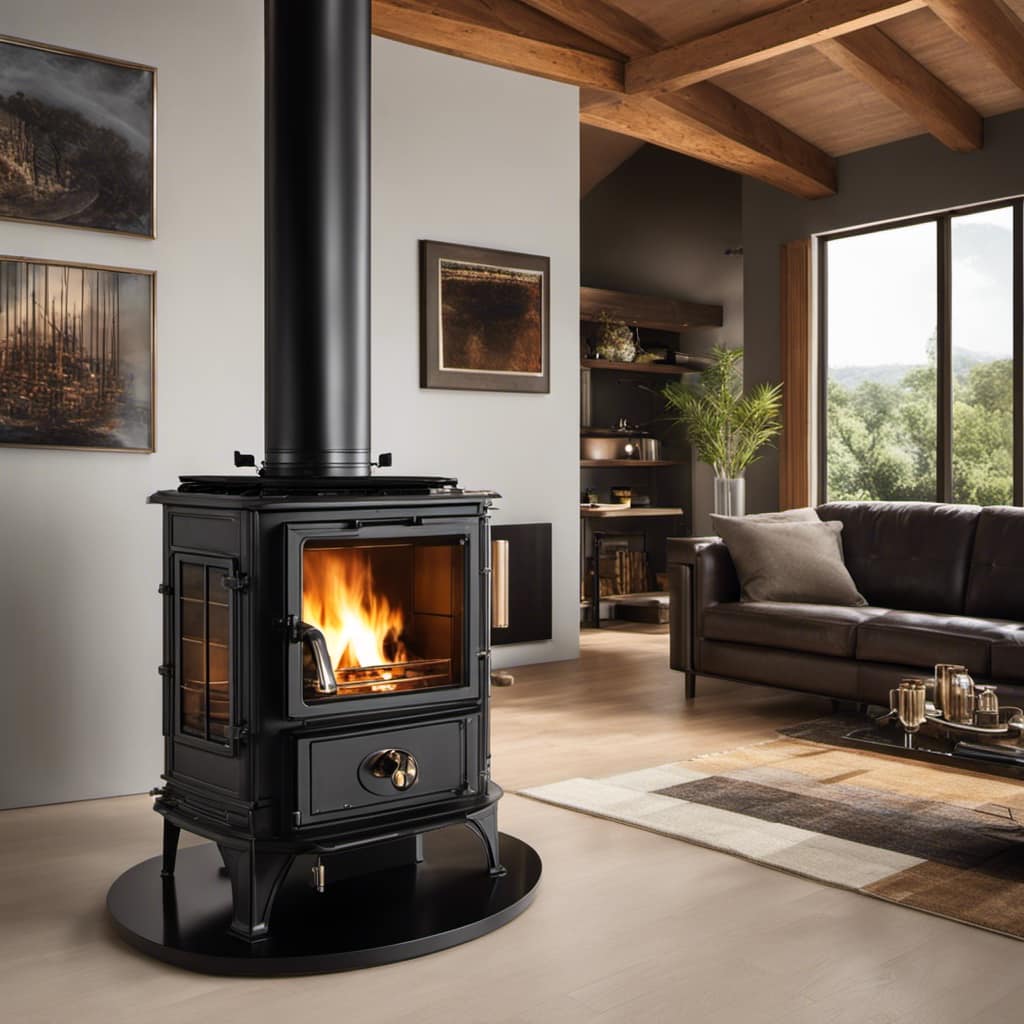
Put on protective gloves and goggles to prevent any injuries.
Check the manufacturer’s instructions for specific installation guidelines.
Make sure the chimney is clean and free from any debris or obstructions.
Install the hearth pad or floor protector to protect your flooring from heat and sparks.
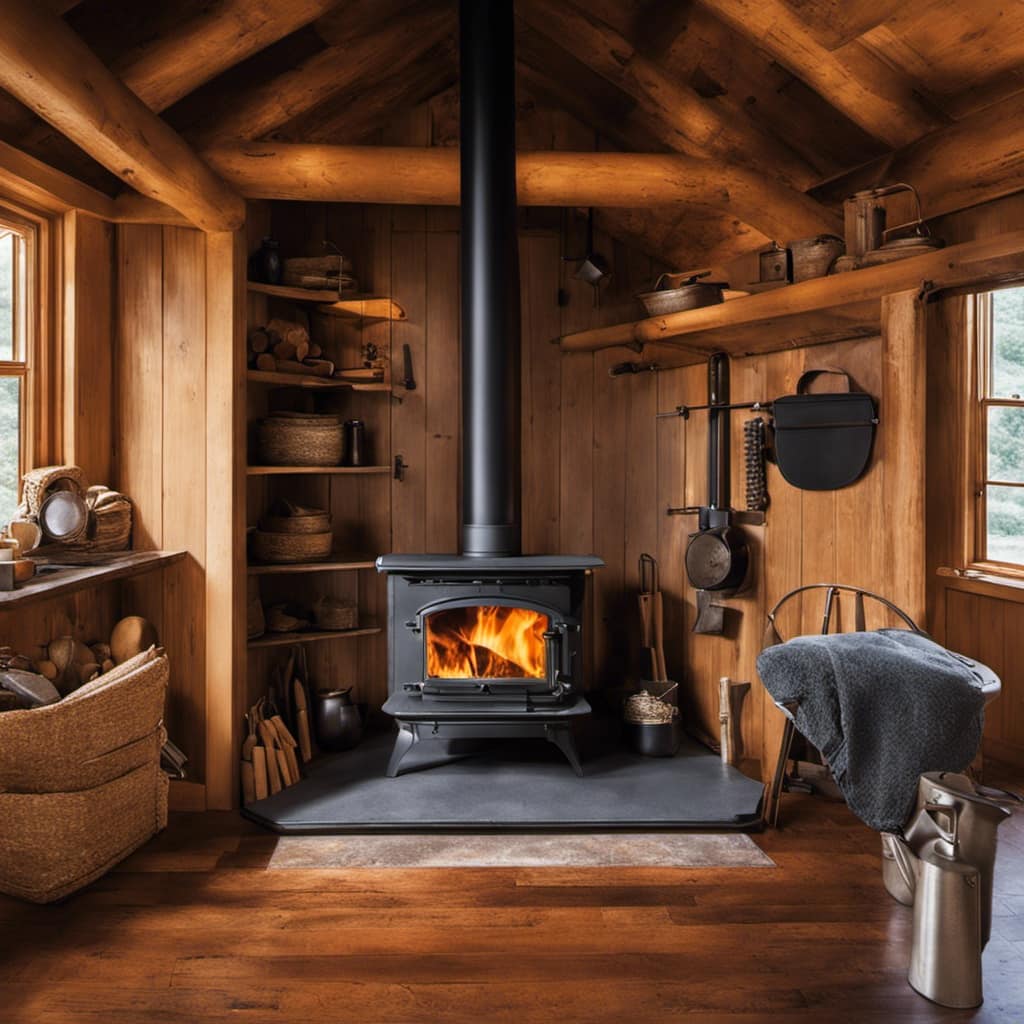
Carefully position the wood stove insert into the fireplace opening, ensuring it’s level and centered.
Connect the stovepipe to the insert and secure it with screws or clamps.
Install a chimney liner to improve draft and prevent the buildup of creosote.
Connect the stovepipe to the chimney liner using a connector pipe and secure it tightly.
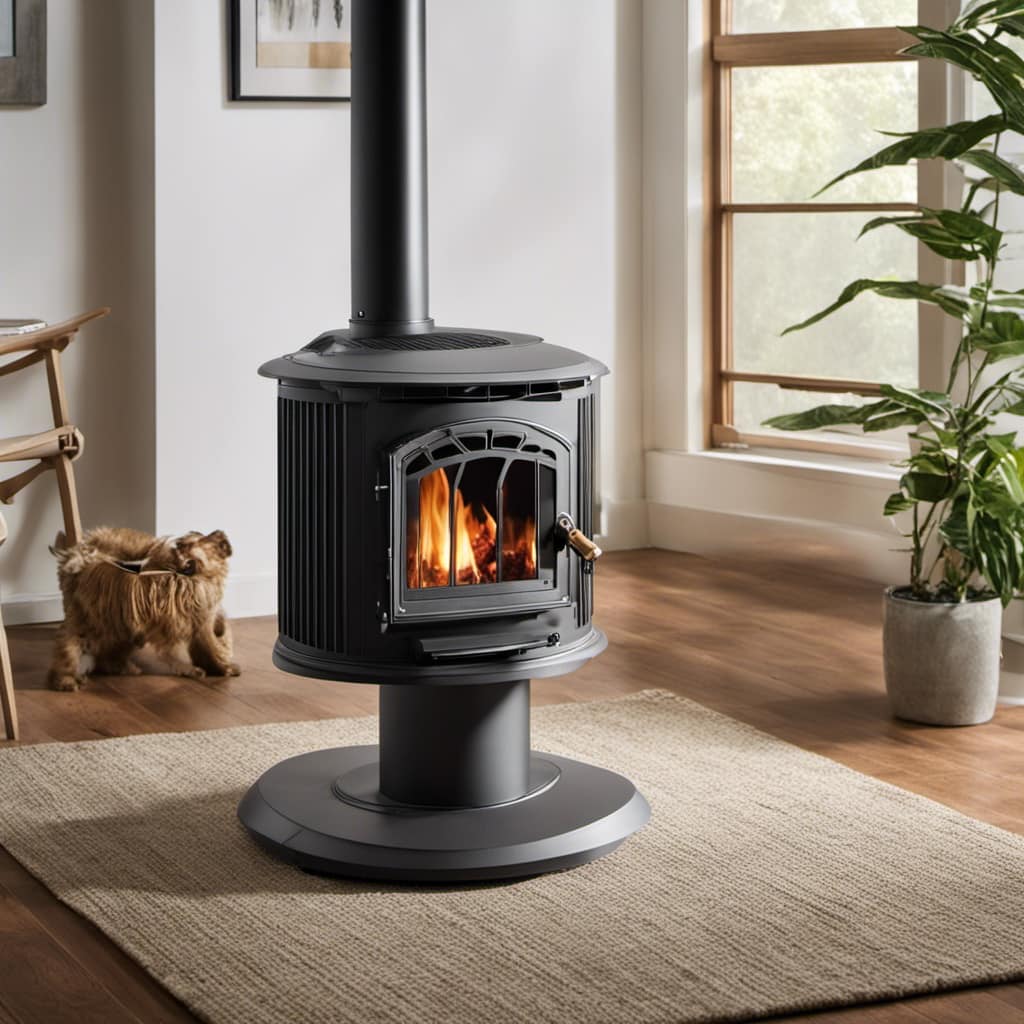
Test the wood stove insert for proper operation and check for any leaks or issues.
Remember to follow all safety precautions, such as keeping flammable materials away from the stove and having a fire extinguisher nearby. If you’re unsure about any step of the installation process, consult a professional to ensure a safe and proper installation.
Testing and Maintaining Your Wood Stove Insert for Optimal Performance
Maintaining optimal performance of my wood stove insert requires regular testing and inspection.
To ensure that my wood stove insert is functioning safely and efficiently, I follow these steps:
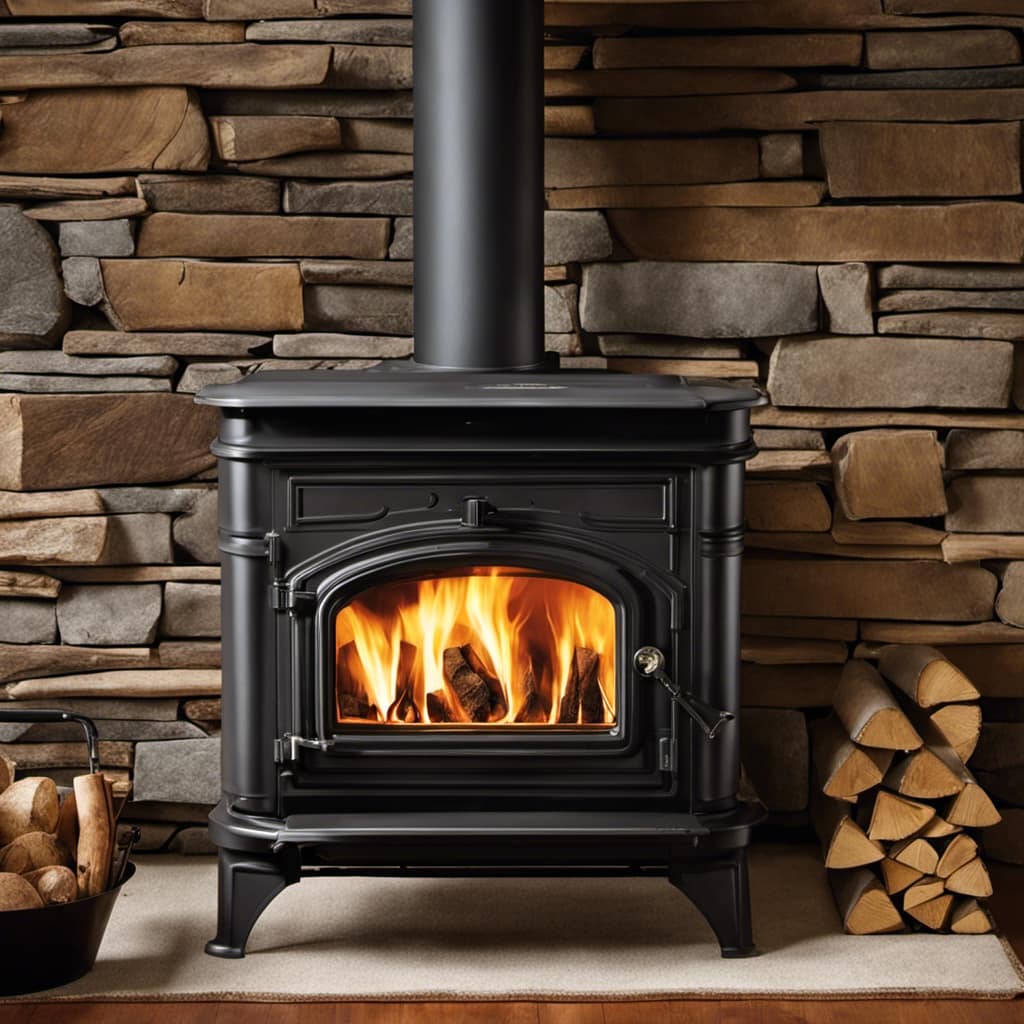
Check for air leaks: I inspect the gaskets and seals around the stove door and flue pipe for any signs of wear or damage. If I notice any leaks, I replace the gaskets or seals to maintain a proper seal.
Test the draft: I use a smoke pencil or incense stick to check the draft of the stove. By holding the smoke pencil or incense stick near the stove door and flue pipe, I can observe the direction and strength of the draft. If the draft is weak or inconsistent, I may need to clean or adjust the flue pipe or damper.
Monitor the temperature: I regularly check the temperature inside the stove using a stove thermometer. This helps me ensure that the stove is operating at the optimal temperature range for efficient and clean burning. If the temperature is too low, I may need to adjust the air intake or clean the burn pot.
By regularly testing and inspecting my wood stove insert using these methods, I can troubleshoot any issues and ensure that it’s operating at its best.
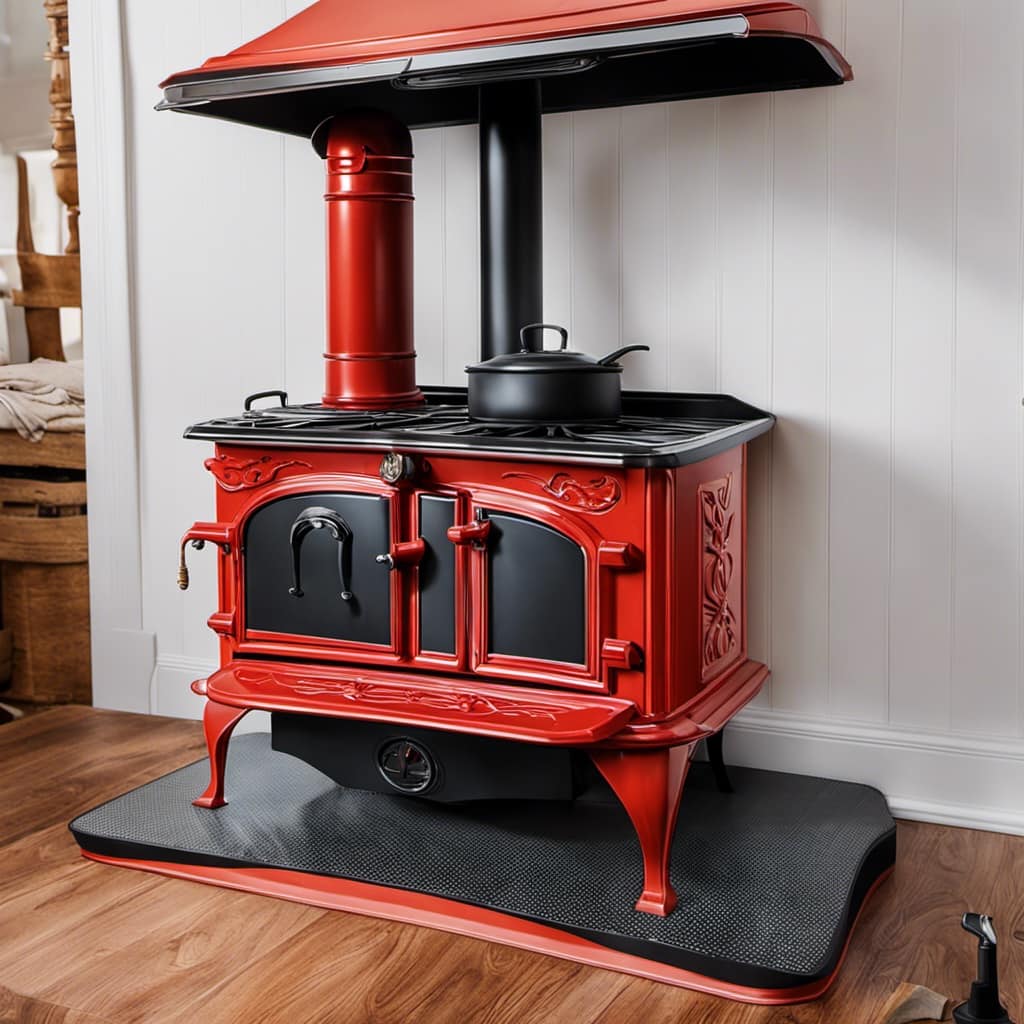
Remember to always follow safety precautions and consult a professional if you’re unsure or encounter any problems.
Frequently Asked Questions
How Long Does It Typically Take to Install a Wood Stove Insert?
Typically, the installation time for a wood stove insert depends on the size of the insert. Larger inserts may require more time and effort to properly install.
It’s important to carefully measure the dimensions of the fireplace opening and the insert to ensure a proper fit. Before starting the installation process, make sure to gather all the necessary tools and materials.
Safety precautions, such as wearing gloves and eye protection, should be followed throughout the installation process.
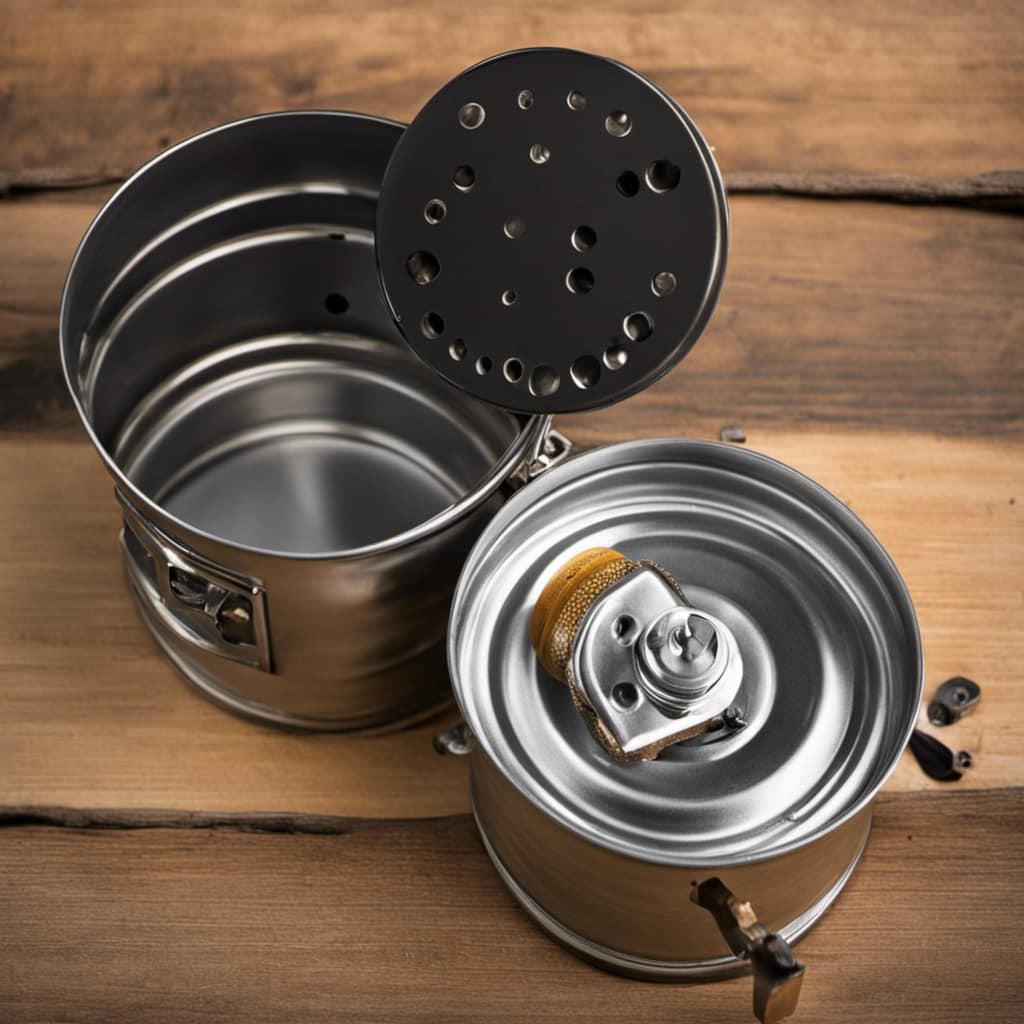
Can a Wood Stove Insert Be Installed in a Fireplace That Is Already in Use?
Installing a wood stove insert in a fireplace that’s already in use can present potential safety concerns. It’s important to ensure proper clearance between the insert and the existing fireplace, as well as to address any ventilation issues. Additionally, it’s crucial to follow all manufacturer’s instructions and safety precautions.
However, using a wood stove insert in a fireplace offers several benefits. Firstly, it increases efficiency by allowing for better combustion and heat distribution. This means that less energy is wasted, resulting in lower heating costs. Secondly, a wood stove insert reduces heat loss by creating a sealed system that prevents warm air from escaping up the chimney. This can make a significant difference in maintaining a comfortable temperature in your home.
Lastly, using a wood stove insert can improve air quality. Traditional fireplaces can produce a lot of smoke and particulate matter, which can be harmful to respiratory health. Wood stove inserts, on the other hand, have built-in mechanisms to control the combustion process and reduce emissions. This means that you can enjoy the warmth and ambiance of a fire without compromising the air quality in your home.
Are There Any Special Requirements for the Type of Wood That Can Be Burned in a Wood Stove Insert?
When it comes to the type of wood that can be burned in a wood stove insert, there are definitely some requirements to consider.

First and foremost, it’s important to use dry, seasoned wood that has been properly stored. Green or wet wood can lead to excessive smoke and creosote buildup, which is a fire hazard.
Additionally, avoid burning treated or painted wood, as it can release toxic chemicals.
Always prioritize safety and choose the right type of wood for your wood stove insert.
Do I Need to Hire a Professional for the Installation, or Is It Something I Can Do Myself?
I can definitely install a wood stove insert myself, but it’s important to consider the advantages of hiring a professional. They have the expertise and experience to ensure a safe and proper installation.

However, if you decide to go the DIY route, here are some tips:
- Make sure to read and follow the manufacturer’s instructions carefully.
- Gather all the necessary tools.
- Take safety precautions such as wearing protective gear and ensuring proper ventilation.
Are There Any Government Regulations or Permits Required for Installing a Wood Stove Insert?
Government regulations and installation permits are crucial when installing a wood stove insert. It’s important to ensure compliance with local building codes and fire safety regulations.
Permits may be required to ensure that the installation meets safety standards and is properly inspected. Failure to obtain the necessary permits can result in fines or even the removal of the stove.
It’s recommended to consult with local authorities or a professional to navigate the regulations and obtain the required permits for a safe and legal installation.

Can I Use the Same Steps for Installing a Wood Stove Insert in a Corner?
Yes, you can use the same steps for installing a wood stove insert in a corner. However, you may need to consider the specific dimensions and space requirements for a corner installation. It’s important to follow the manufacturer’s instructions and seek professional guidance for safe and efficient installation wood stove corner.
Conclusion
In conclusion, installing a wood stove insert can be a rewarding project that adds warmth and efficiency to your home. By carefully assessing your space, choosing the right insert, and following the proper installation steps, you can enjoy the benefits of a cozy and cost-effective heating solution.
For example, John and Sarah decided to install a wood stove insert in their living room, and they were thrilled with the increased heat output and reduced energy bills.
Remember to always prioritize safety and regularly maintain your wood stove insert for optimal performance.
Growing up surrounded by the vast beauty of nature, Sierra was always drawn to the call of the wild. While others sought the comfort of the familiar, she ventured out, embracing the unpredictable and finding stories in the heartbeat of nature.
At the epicenter of every remarkable venture lies a dynamic team—a fusion of diverse talents, visions, and passions. The essence of Best Small Wood Stoves is crafted and refined by such a trio: Sierra, Logan, and Terra. Their collective expertise has transformed the platform into a leading authority on small wood stoves, radiating warmth and knowledge in equal measure.











